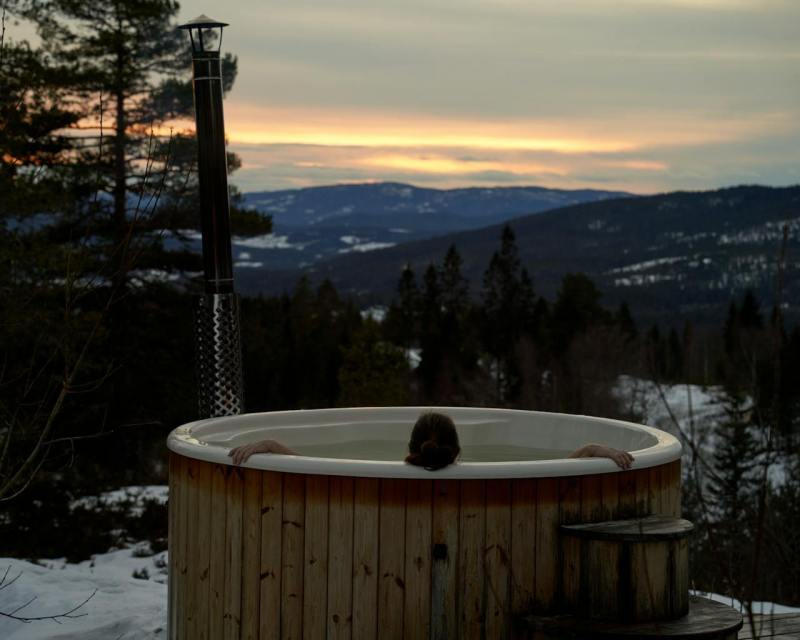Having a hot tub in your backyard escape is nothing short of exciting. But it takes some thoughtful planning.
What type of space works best for one? How do you ensure long-term comfort and reliability?
Your choices go beyond aesthetics. Layouts impact usability, while equipment decisions shape your experience for years. Safety certifications matter as much as picking the right heater system or understanding operational costs.
Ready to turn that corner of your yard into a spa-like retreat? Stick around for a jiffy.
Read on as we explore everything you need to know together.

Choosing the Perfect Spot for Your Hot Tub Installation
Where you choose to place your whirlpool bath or Jacuzzi matters a great deal. Why? It determines access, usability, and even how much you’ll enjoy it.
It’s not just about space. Proximity to electrical outlets saves costs on rewiring, while placing it near your home protects from weather exposure during colder months. Consider privacy too – fencing or greenery shields against prying eyes.
A flat, stable surface ensures safety and reduces maintenance headaches over time.

Local Building Codes and Regulations are Worth Understanding
Another thing you can’t afford to overlook? That’s your area’s building codes. Ignoring them could lead to costly fines or forced removal later.
Many municipalities require permits before installation, especially if you’re adding electrical connections or modifying plumbing systems. Some areas mandate specific safety barriers like locking covers or fencing around hot tubs.
Check requirements early on. Compliance ensures smoother approvals, safer use, and a stress-free experience in the long run.

Safety Features to Prioritize When Installing a Spa
What good is a comforting hot tub in the backyard if it doesn’t guarantee your safety?
Features like anti-slip steps, childproof covers, and proper handrails make all the difference. Ground fault circuit interrupters (GFCIs) prevent electrical risks. Meanwhile, clear water maintenance systems reduce bacteria buildup for healthier soaking.
Long-term use depends on regular upkeep too. Reliable post-installation support, including spa heater replacement solutions, ensures critical components stay efficient and safe as time goes by.

Picking Materials That Withstand Weather and Time
Outdoor hot tubs face constant exposure to weather, so choosing the right materials matters. Durable options like composite decking or treated wood prevent warping, rotting, or fading over time.
Eco-friendly choices are worth exploring too. Recycled composites and sustainably sourced woods actually stand out among the recent deck trends to elevate your backyard. These not only last longer but also align with greener living while reducing long-term maintenance efforts for a hassle-free retreat.

Energy-Efficient Upgrades for Cost-Effective Relaxation
With the ever-rising costs of utility and the need to conserve the environment, energy efficiency is more crucial than ever when adding a hot tub. While contributing to making your home eco-friendly, simple upgrades can save both money and resources when the time comes.
For instance:
High-quality thermal covers reduce heat loss significantly.
Variable-speed pumps use less electricity during operation.
LED lighting systems cut power consumption for nighttime soaks.
Energy-efficient spa heaters maintain temperature with lower operational costs.
Combining these enhancements helps minimize environmental impact while ensuring relaxing evenings remain budget-friendly year-round.

The Role of Insulation in Maintaining Water Temperature
Proper insulation is the backbone of any energy-efficient hot tub. Without it, heat escapes quickly, leading to higher operational costs and less consistent comfort.
Closed-cell foam is one option that seals gaps effectively. Reflective thermal blankets trap warmth on the water’s surface. Even your cabinet insulation matters, reducing external temperature loss.
Quality insulation keeps heating systems running smoothly too. It’s a great way to keep your soak warm without constant adjustments or expensive energy use.

Budgeting Beyond the Purchase: Maintenance and Upkeep Costs
The initial price tag isn’t the only cost to consider. Regular maintenance, energy use, and part replacements all add up over time.
The average cost of owning and maintaining a hot tub typically ranges from $100 to $200 per month. That’s with electricity, maintenance, and occasional part replacements factored in. However, this may vary based on usage, location, and hot tub model.
Planning ahead for these expenses ensures a smoother experience without unexpected surprises later on.
Yes, a backyard hot tub indeed offers relaxation and comfort. But long-term enjoyment largely depends on purposeful planning. Material choices to energy-saving solutions, every detail impacts your investment. Balancing costs and quality ensures not just comfort, but also reliability and peace of mind for years to come.
The post What You Should Know Before Adding a Hot Tub to Your Backyard Escape appeared first on Moss and Fog.
